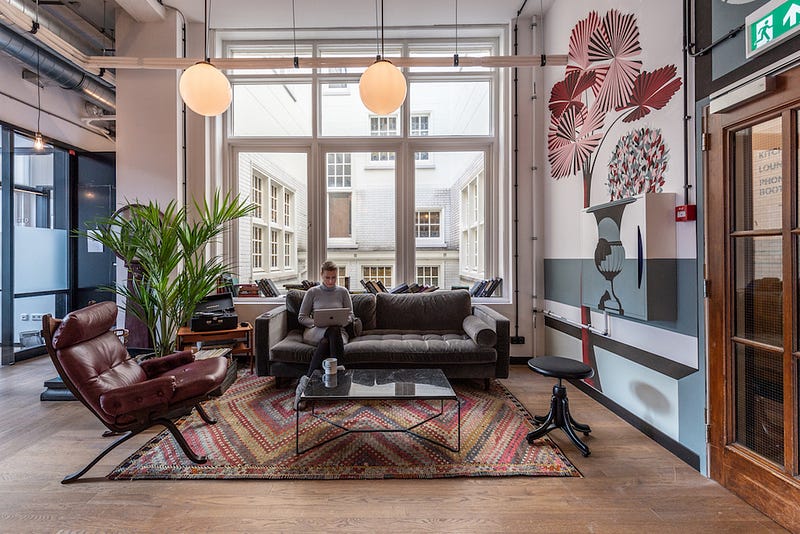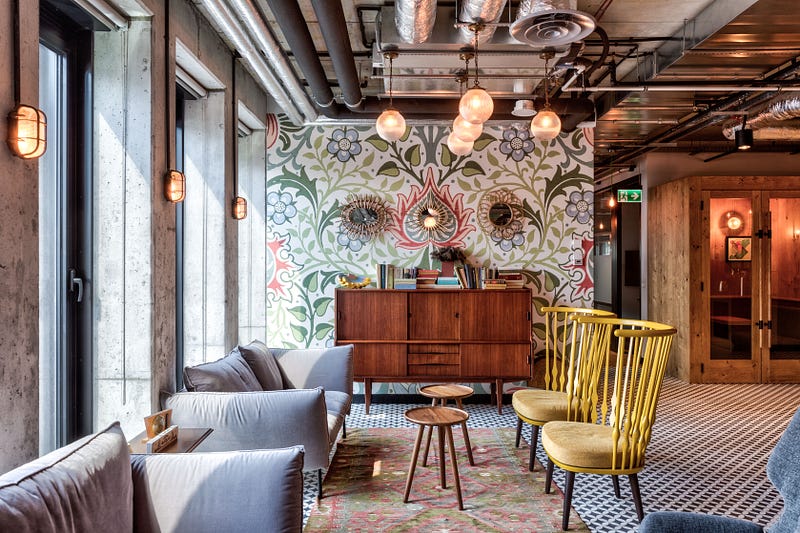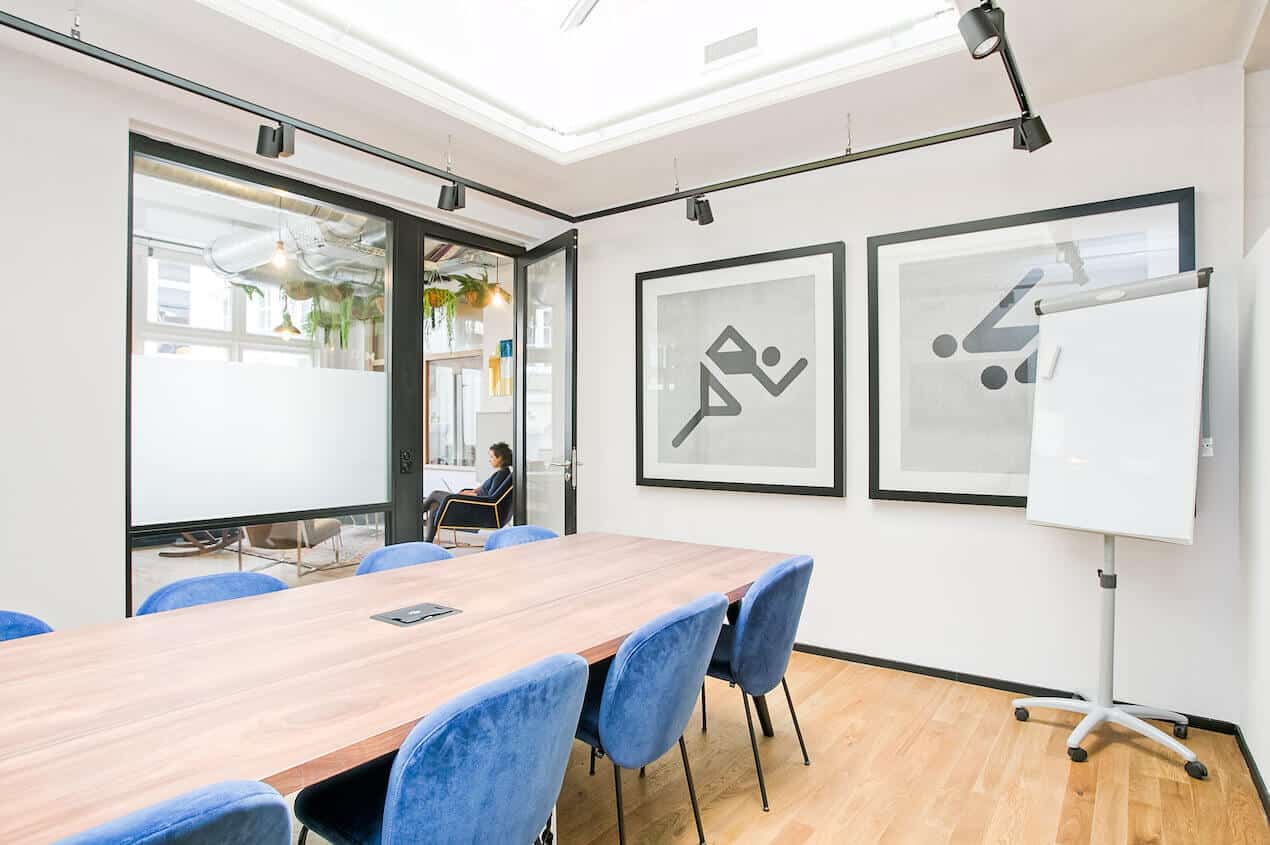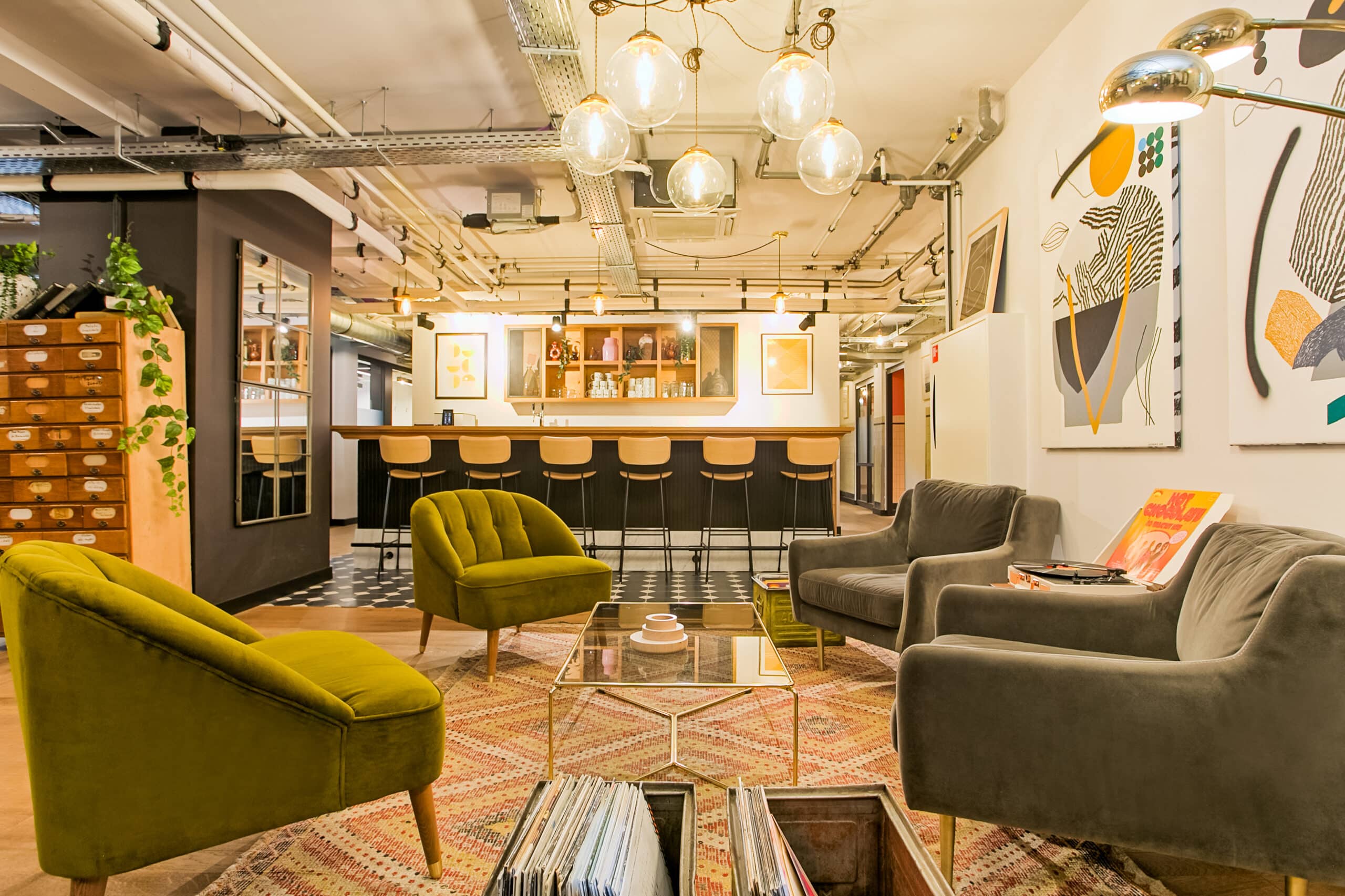For a long time, the workspace options of a startup or freelancer were slim. Most people starting out a business or working for themselves had no option, but to work from home or in their local café, which could prove isolating, distracting and unproductive. Somewhere around the early ’00s, coworking spaces for freelancers emerged as a much-needed solution.
Coworking offices have not been around long, but in that short time, they have skyrocketed into a global phenomenon. The mode of work is changing, and in no small part due to the success of coworking (check out our article with myths about coworking spaces) and flexible office spaces such as our hybrid offices in London. Now tens of thousands of people globally can take advantage of more productive, communal and vibrant workspaces, from a hip coworking space in Williamsburg to an urban but green Hammersmith flexible office.
In fact, an office solution once directed at freelancers and startups now caters to everyone from one-person bands to international corporations and enterprises. Everyone seems to be taking advantage of the financial benefits of coworking and of being social in your coworking space.
Here is a chronological snapshot of some of the key moments throughout the history of coworking, how coworking started and where it is going. We are proud to be a part of this industry, which is shaping the future of work.
A Brief History of Coworking: Timeline
1999 — Bernard DeKoven coins the phrase ‘coworking’. However, the term refers to something different than today’s concept of coworking. DeKoven, a game designer, uses ‘coworking’ to refer to the way we work, not the space that we work in. He hopes to evolve ways of working that involve collaboration, a breakdown of hierarchy and seeing co-workers as equals.
2002 — Two Austrian entrepreneurs set up an ‘entrepreneurial center’, Schraubenfabrik, in an old factory in Vienna. The space is aimed at entrepreneurs, giving them a place to avoid having to work from home, where they can collaborate and work with like-minded people. The space included architects, PR consultants, startups and freelancers. This space is clearly the mother of coworking and although not called a ‘coworking space’, it’s undoubtedly a clear precursor to what we know today.
2005 — On August 9th, Brad Neuberg sets up the first-ever official coworking space, San Francisco Coworking Space, at a feminist collective called Spiral Muse in the Mission district of San Francisco. The space is intended to maintain the freedom of working independently whilst providing the structure and community of working with others. Neuberg has to pay $300 (£230) a month to use the space for two days a week. For the first month, no one turns up. After more outreach from Neuberg, an athlete and startup developer named Ray Baxter arrives, becoming the spaces first member and in turn the world’s first official coworker.
2006 — From 2006, the number of coworking spaces and coworking members approximately doubles each year for the next seven years. This exponential growth will soon become known as the coworking revolution.
2006 -The Hat factory opened as the first full-time workspace that was labeled as a ‘coworking space.’
2007 — The first time that ‘coworking’ appeared as a trend on Google’s database. Since that time, search queries have exploded by 20 times, reaching all-time highs in early 2019.
(Growth in Google’s global “coworking” trend since 2007)
2008 — Coworking visas are introduced, meaning that members of specific coworking spaces are given free access to other coworking spaces also included in the agreement. This means that workers who travel can use coworking offices all around the world without having to spend the extra money and also develops the global coworking community. The key ideas around coworking and collaborative working are developed and continue to spread around the globe.
2009 — “I’m Outta Here! How coworking is making the office obsolete” is released. This is the first book on coworking and charts the course of the people and the places involved in the coworking revolution, as well as how coworking is changing the way we view the traditional office.
2009 — Betahaus opens in Germany, as one of the first official ‘coworking spaces’, placing coworking into Germany’s mainstream media.
2010 — The first online magazine about Coworking, Deskmag, goes online on July 10th. The magazine is based in Berlin and covers all aspects of coworking, writing articles on the development, function, and design of coworking spaces.
2010 — On the 19th and 20th of November, the first coworking conference takes place in Brussels. The event brought together over 150 thinkers, owners, activists and policymakers together to discuss the potential of coworking in Europe.
2011 — the first large companies and enterprises begin to experiment with their own coworking spaces. WeWork, in its current form, opens its doors to entrepreneurs in New York City.
2012 — The first ever coworking conference in Japan is held on June 16th. Just two years previously Japan had no more than five coworking spaces and at the time has more than 70. This serves to signal the rise of coworking in Asia.
2012 — More than 2000 coworking spaces worldwide.
2013 — Over 100,000 people worldwide working from coworking spaces. The 3,000th coworking space opens.
2014–5,780 coworking spaces worldwide with 295,000 members.
2014 — In Tel Aviv, Dan Zakai and Yotam Alroy recognize a shift in the nature of the work environment. To overcome the traditional and somewhat broken office model, they set up the first coworking space in the city, Mindspace. This new space aims to be different from traditional offices, by offering a higher-quality, boutique-style workspace for all levels of enterprises. Mindspace catches on rapidly. After only a year, the now massive coworking brand opens its second location in the old Tel Aviv Stock Exchange.
We see moving forwards how more and more businesses and tech startups choose coworking as a solution.
2017 — This is the year that coworking finally cracks one million coworkers worldwide.
2018 — London is currently the capital of coworking, with more coworking spaces than New York, San Francisco, and Berlin. Coworking occupies 10.7 million square feet of office space in Central London alone, with spaces like the Mindspace Shoreditch coworking contributing to this dynamic trend.
2018 — Today, only 4 years after its inception, Mindspace has 28 locations across 13 cities in 7 countries, including a coworking space London, shared Philadelphia office spaces and Brooklyn coworking, and are continually growing. In just four years, Mindspace has expanded to a global community of over 14,000 members.
2019 — Worldwide, over 21,000 coworking spaces expected by the end of 2019.
If you’re looking for a flexible and vibrant coworking space in the heart of Berlin, Mindspace Ku’damm is the perfect solution. With beautifully designed offices to rent, fully equipped meeting rooms, and a dynamic community of entrepreneurs and professionals, our coworking space on Ku’damm offers everything you need to grow your business and network with like-minded individuals. Check out our website to learn more about our flexible workspace options.













